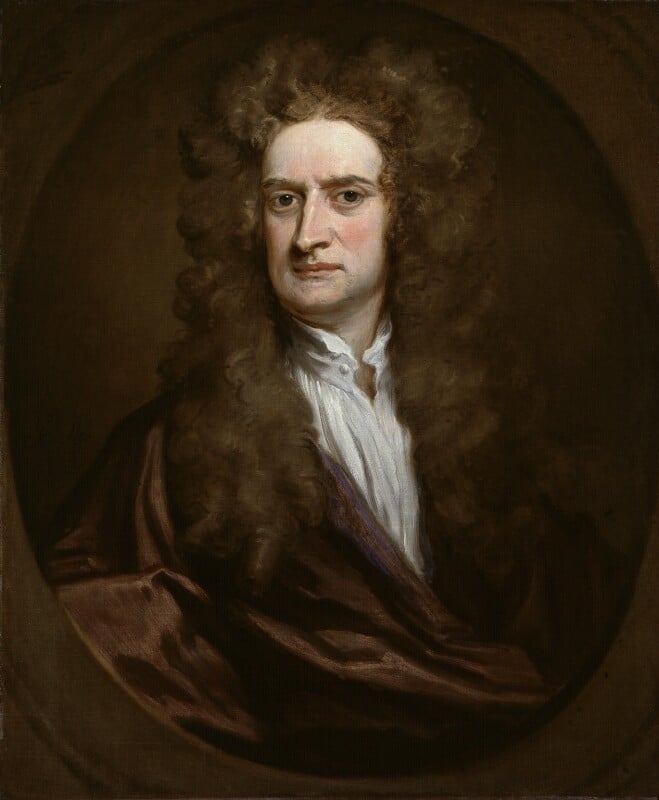
“Sir Isaac Newton,” by Sir Godfrey Kneller, 1702. (Photo: © National Portrait Gallery, London, CC BY-NC-ND 3.0)
Isaac Newton is known for his work on gravity and calculus, among his many accomplishments. The discoveries and self-promotional efforts of one of history's most brilliant men stack up to a fascinating life. Newton would apply his talents in many areas. Light, music, the Bible—few topics were beyond his interest and skills. Just what were those myriad pursuits?
Read on to discover Isaac Newton‘s monumental contributions.
Early Life of Isaac Newton
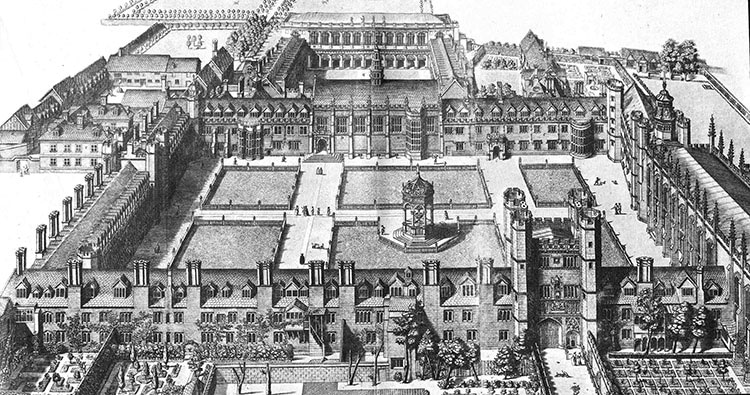
Trinity College, Cambridge, where young Newton studied. (Photo: Wikimedia Commons, Public domain)
Isaac Newton was born in December of 1642 in Lincolnshire, England. At the time, England was briskly devolving into the English Civil War which would result in a period of interregnum (no king) before the Restoration of King Charles II in 1660. Interregnum rule was deeply Puritan and steeped in religious philosophy. By all accounts, Newton had a tricky family life and was generally unhappy. He showed an early talent for math, and in 1661 entered Trinity College, Cambridge. It was at Cambridge that Newton studied, taught, and began considering the workings of the universe.
Newton's Paradigm-Shifting Achievements
Newtonian Physics

Newton's Cradle, which demonstrates principles of Newtonian Physics. (Photo: Stock Photos from DSLAVEN/Shutterstock)
Isaac Newton is perhaps best known for his “discovery” of gravity. While gravity always existed, legend states that Newton had an epiphany when hit by an apple falling from a tree above. Although he was the first to postulate a theory of universal gravitation, his contributions to our understanding of the physical world were, in fact, much broader. Newton's famous work entitled Philosophiæ Naturalis Principia Mathematica (Mathematical Principles of Natural Philosophy, 1687) laid out the relationships that every high school student learns today in their introduction to what is known as classical mechanics.
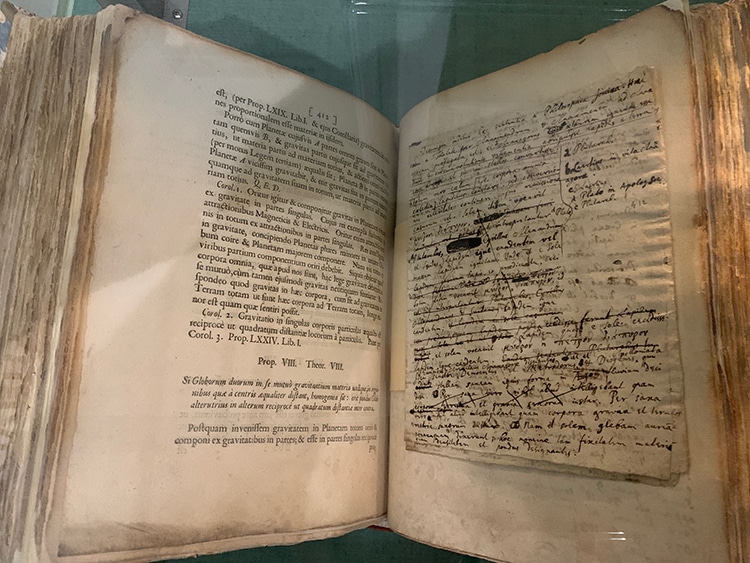
Isaac Newton's “Philosophiæ Naturalis Principia Mathematica” annotated in his won hand for the second edition. (Photo: Billthom via Wikimedia Commons, CC BY-SA 4.0)
The Principia describes the law of universal gravitation—Newton's discovery that all objects in the universe exert a gravitational pull on each other in amounts that can be calculated based on their respective masses and distance apart. The three-volume book also introduced three laws of motion. The first is that an object in motion will stay in motion at the same velocity unless acted upon by an outside force. The second describes an important equation: force is equal to mass times acceleration. Lastly, the third is a common saying of physical fact: for every action, there is an equal and opposite reaction.
Optics

A replica of Newton's second reflecting telescope design. (Photo: Andrew Dunn via Wikimedia Commons, CC BY-SA 2.0)
Newton made significant advances in the field of optics. While a professor at Cambridge, he studied light refracted through a prism, which—like on the Pink Floyd album cover—splits the white light into its component colors. He realized that the spectrum of colors is intrinsic to different rays of light. The light retains its color no matter where it shines. The beams can also be brought back into a single beam of white light using another prism. Newton also believed that light was made up of particles—an opinion which his famous fellow scientist Robert Hooke vehemently rejected in favor of a wave theory.
At the time, early telescopes used refracting lenses to magnify a field of view. Newton was concerned about chromatic aberrations due to the prisms refracting of light. As a result, he set about developing a reflecting telescope that employed mirrors to magnify an image. He crafted his first telescope in 1668. In 1671, he showed his latest version to the Royal Society of London, of which he soon became a member. It was a hit, and Newtonian telescopes are still made in variations today.
Calculus
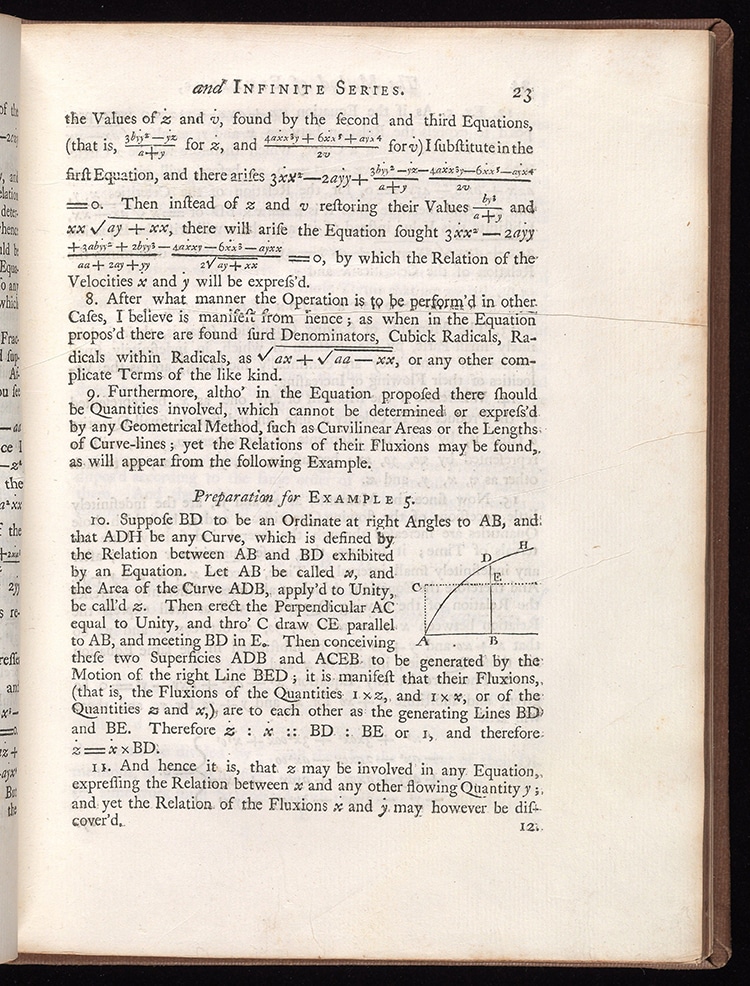
Newton's “The method of fluxions and infinite series, with its application to the geometry of curve-lines,” written in 1671 but published posthumously in 1736. (Photo: Beinecke Library, Yale University, Public domain)
Who has heard of Gottfried Leibniz? The answer is significantly fewer people than those who know Newton's name. This is largely due to Newton's fame in other areas. However, the other founder of calculus' name has gone down in history for his academic tensions with the English physicist. Calculus is essentially the study of curves by determining the area under them or their slopes. The German Leibniz published his work on curves before Newton. However, Newton's earlier notes demonstrated he came up with his own methods during his studies of planetary motion.
So who invented calculus? Well according to Newton, he did. From his powerful position in the Royal Society, Newton made the “decision” of an “impartial” committee in his favor. However, both are typically recognized today. Rather than cheating off one another, they likely made their developments in parallel, as oft happens in STEM.
Other Pursuits: Alchemy, Religion, & Music
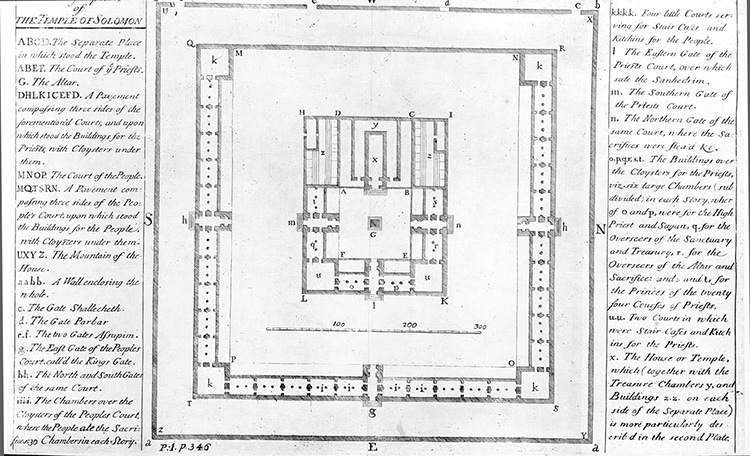
Isaac Newton's rendering of the Temple of Solomon, from his “The chronology of ancient kingdoms amended,” 1728. This edition is housed at the Beinecke Rare Book and Manuscript Library, Yale University. (Photo: Wikimedia Commons, Public domain)
In the 17th century, science was a rather open-ended field. Things such as horoscopes and the search for the Philosopher's Stone were not scorned by even the most established scientists. Newton had ample interest in alchemy, which at the time was closely entwined with the field that developed into modern chemistry. He experimented with metals and concoctions, at one point burning down his lab with most of his notes.
Continuing a classical tradition, Newton saw music as having scientific connections to nature. Newton added orange and indigo to the five existing colors of the rainbow as his study of light seemed deeply tied to musical scales. Even religion was a field upon which Newton sought to make his mark. Newton studied and sketched the Temple of Solomon based on his readings of scripture and ideas of sacred geometry. He also wrote on the ancient civilizations of the Bible in a work entitled The Chronology of Ancient Kingdoms Amended, published posthumously in 1728.
The Afterlife of a Genius
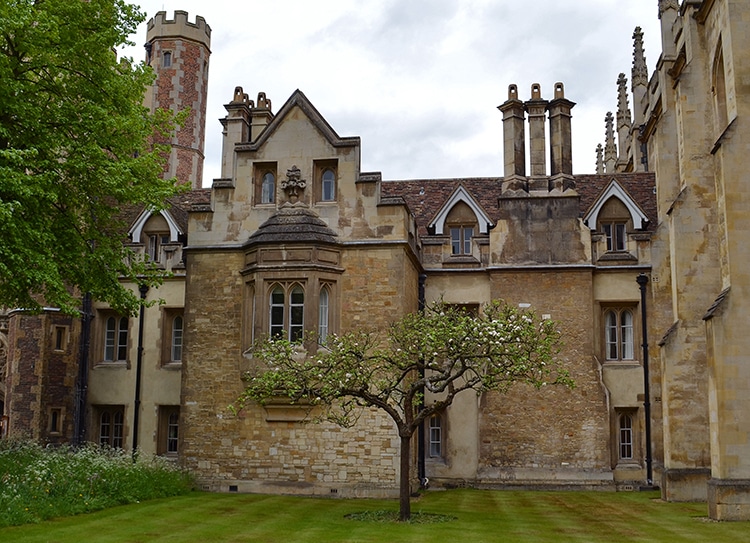
Newton's apple tree at Porter's Lodge, Cambridge. (Photo: Photo: Stock Photos from EMILY GOODWIN/Shutterstock)
Newton achieved rare fame in his lifetime. A polymath, he revolutionized disparate fields. Passing away at 84 in 1727, he left behind a Royal Society shaped by his leadership, larger-than-life mythology, and the laws of the universe which are still taught today.
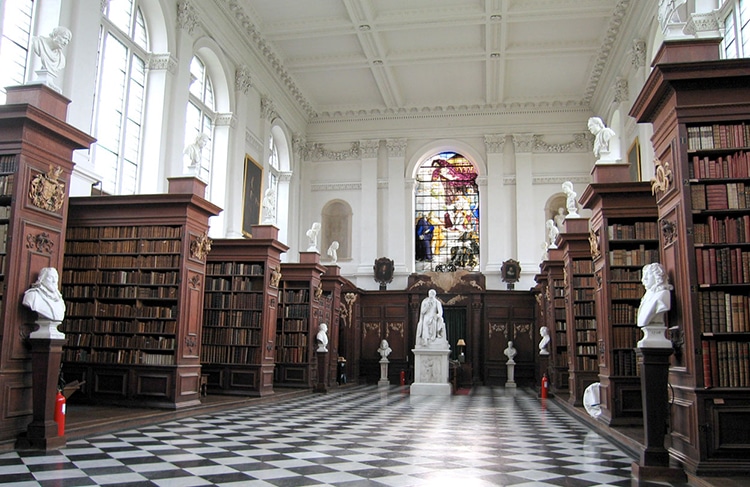
The Wren Library at Trinity College, Cambridge, where many of Newton's works are housed. (Photo: Andrew Dunn via Wikimedia Commons, CC BY-SA 2.0)
Although complicated by Einstein's General Relativity and other more recent developments, Newtonian physics explains so much of what we see today—pool balls darting across tables, cars accelerating, and divers leaping off platforms. For Newton, studying the world was a field in and of itself.
Related Articles:
29 Legendary Scientists Came Together in the “Most Intelligent Photo” Ever Taken
Amazing Restored Photos of Earth Taken by Apollo Astronauts
Who Was Marie Curie? Learn More About This Pioneering Nobel Prize Winner
Meet the Harvard Computers, the Undervalued Women Who Mapped 400,000 Stars






















































































